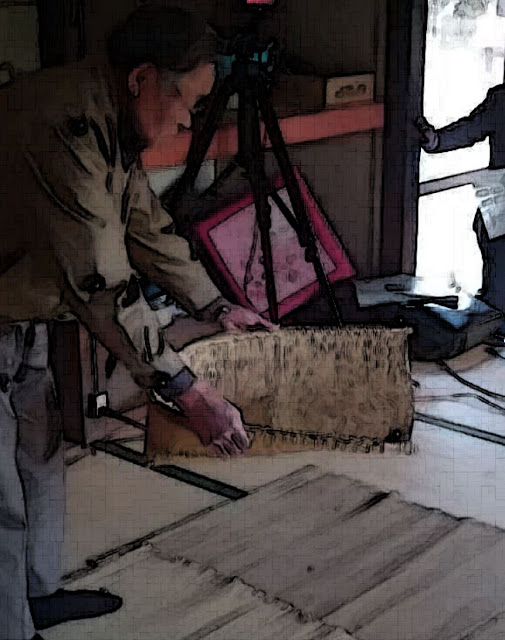岩手県面岸箕から Omogishi Winnowing Basket in Iwate Prefecture

この図は、面岸箕を三次元形状測定機で計測したものです。赤外線レーザーの反射光からその形状を読み取ったものです。反射光を利用しているので、ミサキやアクドが立ち上がった部分のような尖った部分のデータは取得しにくいのですが、面岸の特徴的なイタミの面の形はほぼ完全に撮れているようです。このデータから直接その形状を測定することができます。 This diagram illustrates a measurement of Omogishi Winnowing Basket with a three-dimensional form tracer. Its forms were read from the reflected light of ultraviolet lasers. Since the reflected light is used, it is difficult to obtain data on sharp parts, such as ones where the edge of the opening at the front of a winnowing basket and the stand-up part on the exact opposite side of the opening at the front of the winnowing basket stand up. But it seems that the forms of the sides of a board-shaped structure made by weaving thin bamboo sticks made of the torn outer skin of thin straight bamboo and skinned Japanese wisteria (a winnowing basket made of board-like material) characteristic of the Omogishi district are captured almost completely. The forms can be directly measured from this data. この図ではアクドのあたりを測定している様子が伺え...


